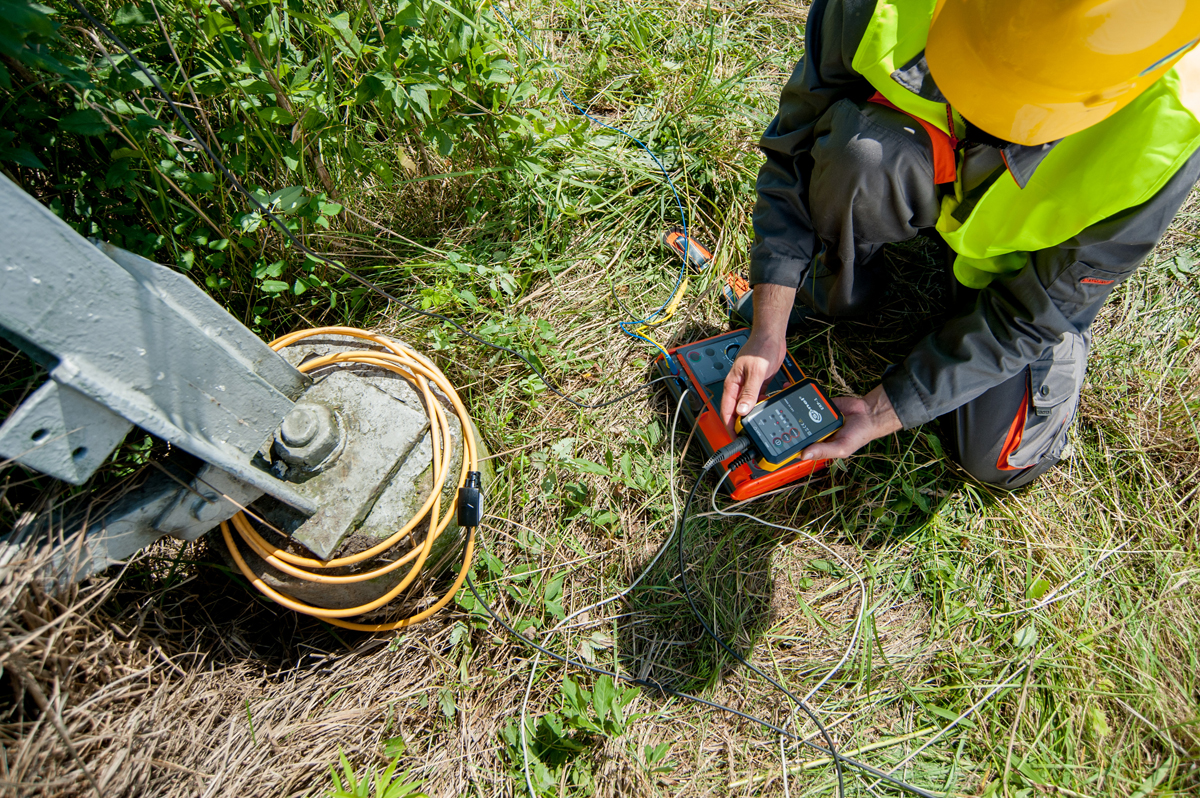
- Lengthen the grounding electrode in the ground
- Install more electrodes
- Hold chemical treatment of soil
Method 1. Increase of the length of the electrode
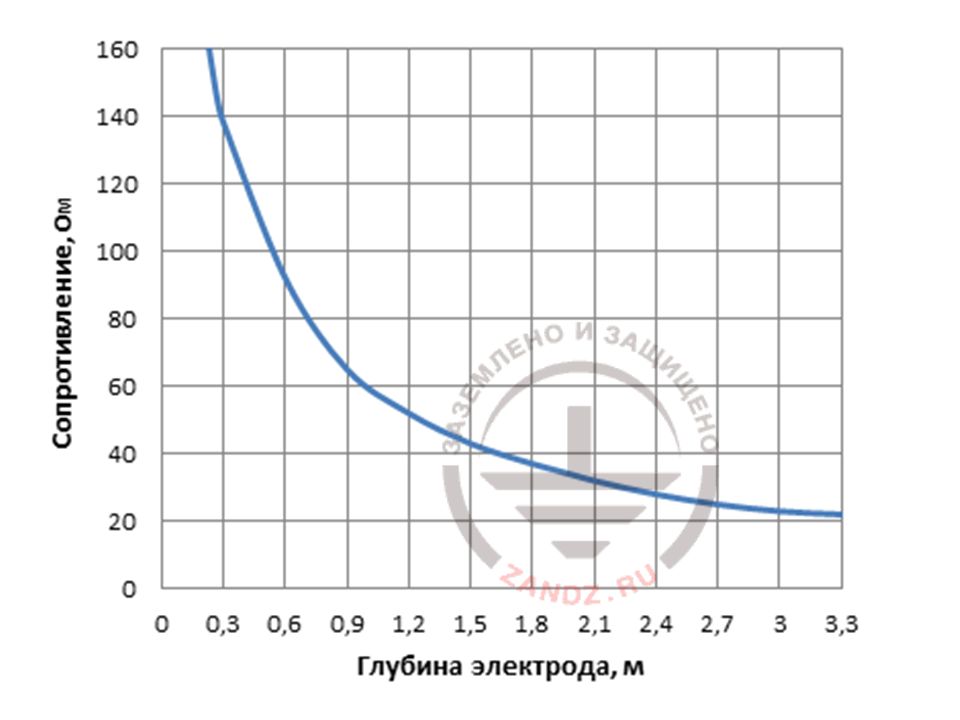
Сопротивление- resistance, Ohm
Глубина электрода, м – Electrode depth, m
Fig. 1 Resistance decreases with the immersion of the electrode into the ground.
Is it possible to reduce the grounding resistance by increasing the diameter of the electrode? Yes, but not by much. At the same depth of immersion, the electrode of the doubled diameter will reduce the grounding resistance only by 10% (see fig. 2).
For example, an electrode with the diameter of 15 mm, embedded to 3 m, has a resistance to the spreading current of 6.33 ohms. Increasing the diameter to 30 mm can only reduce the grounding resistance to 5.6 ohms. Therefore, the variant with an increase in the diameter of the electrode should be considered only if it is necessary to increase its strength in order to bury it in solid soil.
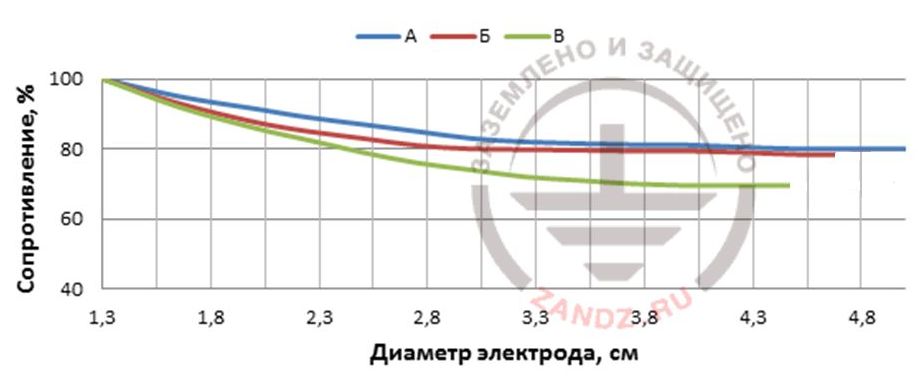
Сопротивление- resistance, Ohm
Диаметр электрода, м – Electrode diameter, m
Method 2. Use of multiple electrodes
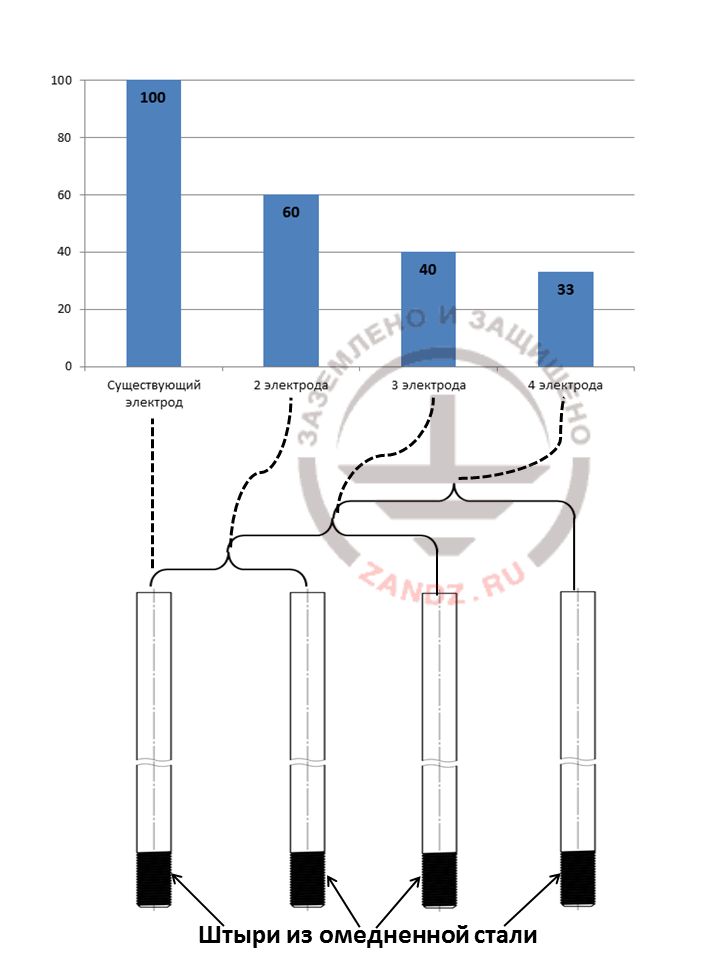
Существующий электрод – existing electrode
2 электрода – 2 electrodes
3 электрода – 3 electrodes
4 электрода – 4 electrodes
Method 3. Chemical tillage
This is one of the most effective ways to reduce grounding resistance. It should be used if, for example, the object has rocky or everlasting ground. In addition, chemical soil treatment reduces the effect on the resistance of periodic seasonal moistening and drying of the soil (see Fig. 4).
Сопротивление заземляющего устройства без обработки почвы – ground electrode resistance without soil treatment
Сопротивление заземляющего устройства после обработки почвы - ground electrode resistance after soil treatment
Сопротивление- resistance, Ohm
Месяцы - Months
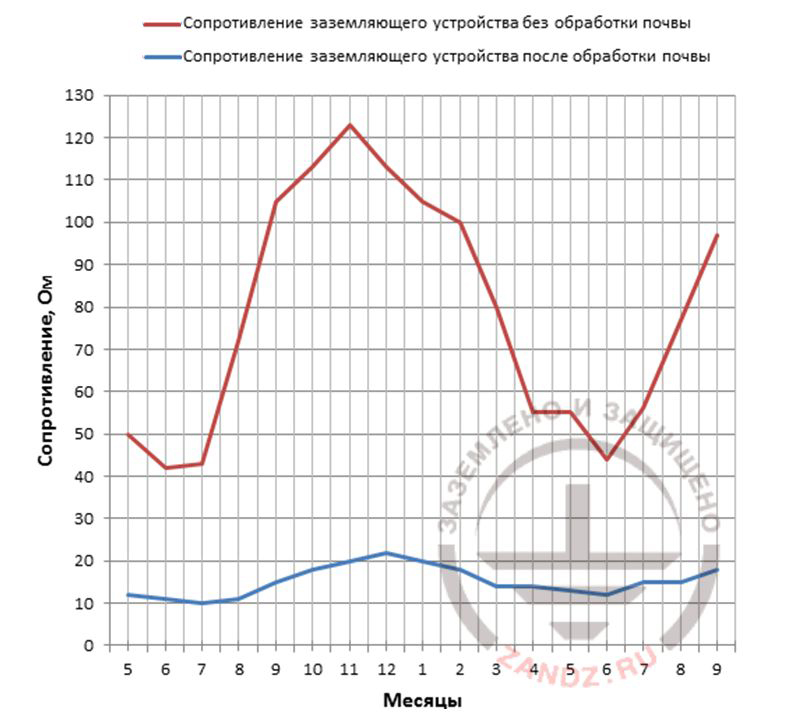
Fig. 4. Chemical tillage reduces seasonal fluctuations of grounding resistance
There is no universal recipe for chemical soil treatment. It is necessary to take into account its cost, corrosive effect, as well as the applicable environmental standards in each case. It should also be remembered that soluble sulphates aggressively affect concrete, therefore, they should be avoided from being applied near concrete foundations.
You can use magnesium sulfate, copper sulfate and ordinary sodium chloride for treatment. Magnesium sulphate has the lowest corrosive effect, and sodium chloride is the cheapest and works when placed in an annular trench with a diameter of about 50 cm and a depth of 30 cm dug around the electrode.
It is important to remember that after the chemical treatment of the soil, the resistance decreases only for a while: precipitation and natural soil drainage reduce the concentration of the chemical agent. The way out is to place it not in a trench, but in a hollow perforated electrode. Then the leaching process will become more uniform and gradual, which for a long time reduces the resistance. This principle is the base of ZANDZ electrolytic grounding. It uses a stainless steel electrode, filled with a patented saline solution. One filling of this mixture lasts for 10-15 years, and the service life of the electrode reaches 50 years. Another advantage of electrolytic grounding is the shallow depth of installation: thanks to the L-shaped form of the electrode, it is buried by only 0.7 m.
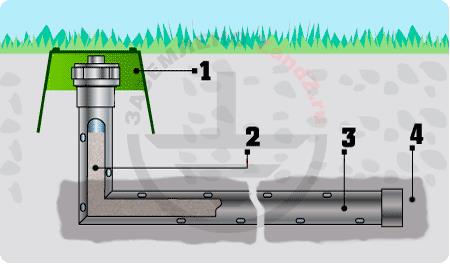
- Inspection pit
- Special mixture of mineral salts
- Ground electrode
- Near-electrode filler
Related Articles:





